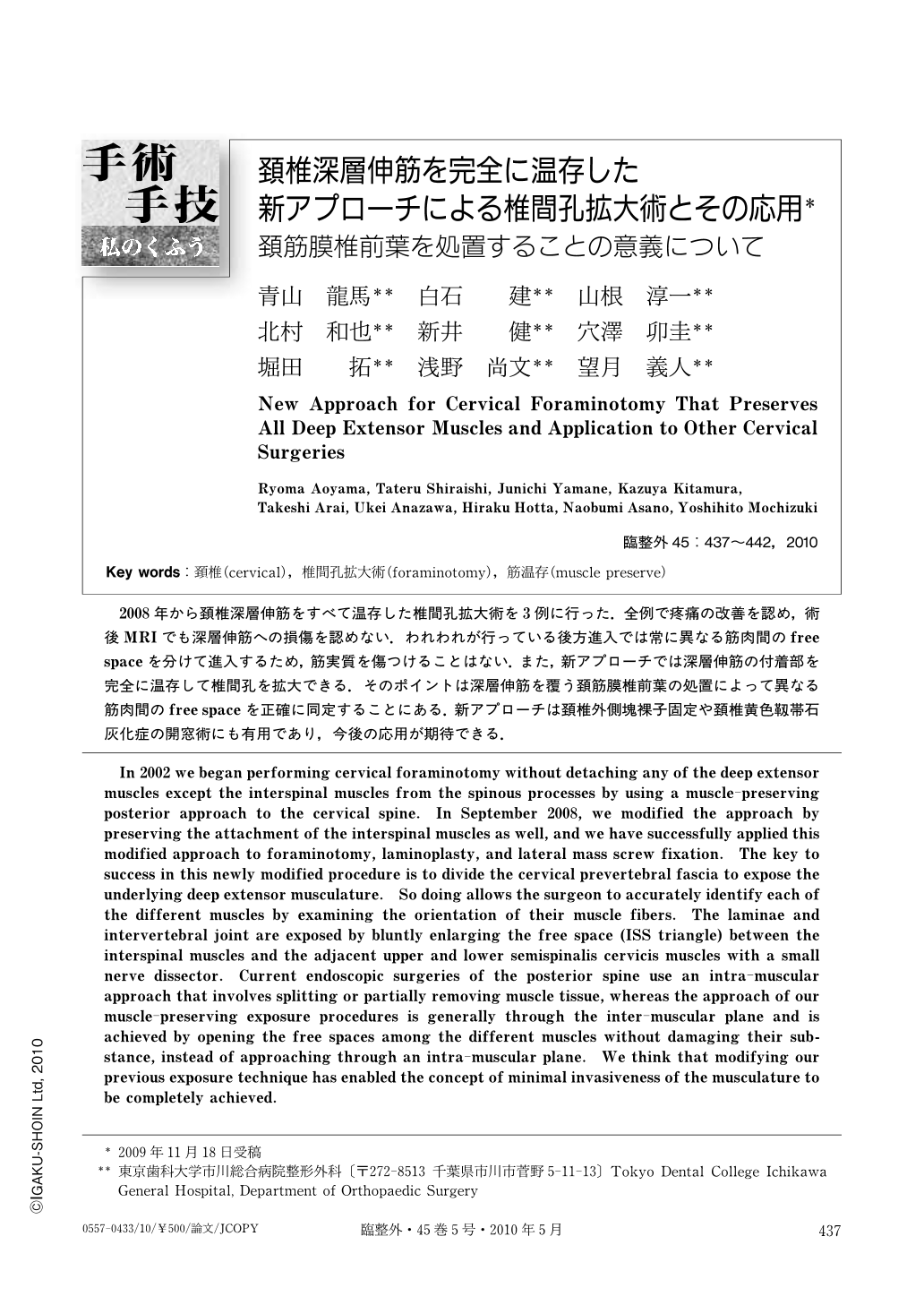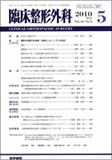Japanese
English
- 有料閲覧
- Abstract 文献概要
- 1ページ目 Look Inside
- 参考文献 Reference
2008年から頚椎深層伸筋をすべて温存した椎間孔拡大術を3例に行った.全例で疼痛の改善を認め,術後MRIでも深層伸筋への損傷を認めない.われわれが行っている後方進入では常に異なる筋肉間のfree spaceを分けて進入するため,筋実質を傷つけることはない.また,新アプローチでは深層伸筋の付着部を完全に温存して椎間孔を拡大できる.そのポイントは深層伸筋を覆う頚筋膜椎前葉の処置によって異なる筋肉間のfree spaceを正確に同定することにある.新アプローチは頚椎外側塊裸子固定や頚椎黄色靱帯石灰化症の開窓術にも有用であり,今後の応用が期待できる.
In 2002 we began performing cervical foraminotomy without detaching any of the deep extensor muscles except the interspinal muscles from the spinous processes by using a muscle-preserving posterior approach to the cervical spine. In September 2008, we modified the approach by preserving the attachment of the interspinal muscles as well, and we have successfully applied this modified approach to foraminotomy, laminoplasty, and lateral mass screw fixation. The key to success in this newly modified procedure is to divide the cervical prevertebral fascia to expose the underlying deep extensor musculature. So doing allows the surgeon to accurately identify each of the different muscles by examining the orientation of their muscle fibers. The laminae and intervertebral joint are exposed by bluntly enlarging the free space (ISS triangle) between the interspinal muscles and the adjacent upper and lower semispinalis cervicis muscles with a small nerve dissector. Current endoscopic surgeries of the posterior spine use an intra-muscular approach that involves splitting or partially removing muscle tissue, whereas the approach of our muscle-preserving exposure procedures is generally through the inter-muscular plane and is achieved by opening the free spaces among the different muscles without damaging their substance, instead of approaching through an intra-muscular plane. We think that modifying our previous exposure technique has enabled the concept of minimal invasiveness of the musculature to be completely achieved.

Copyright © 2010, Igaku-Shoin Ltd. All rights reserved.


